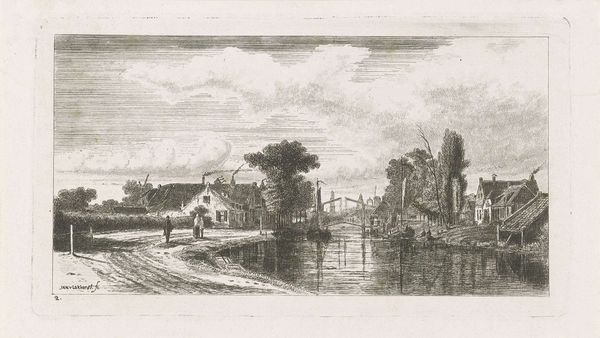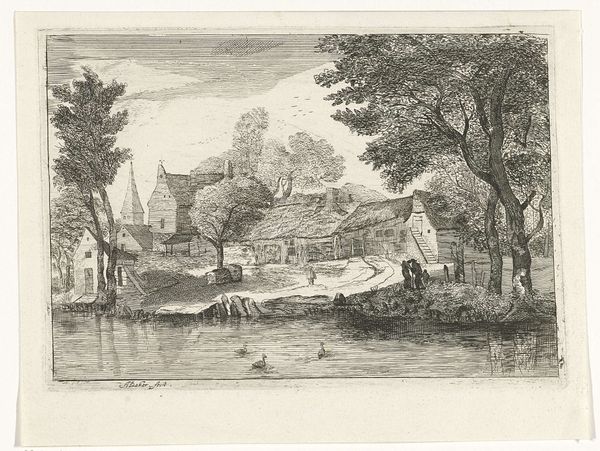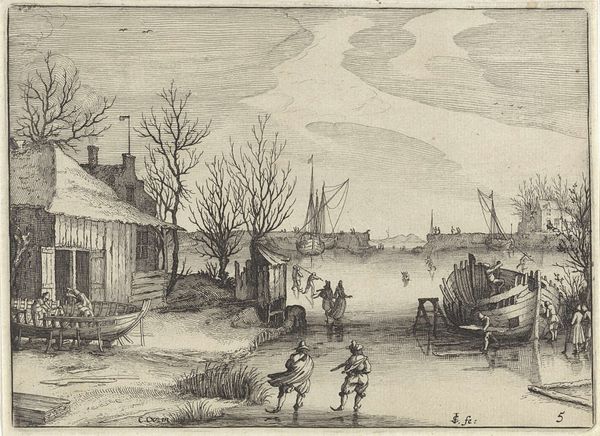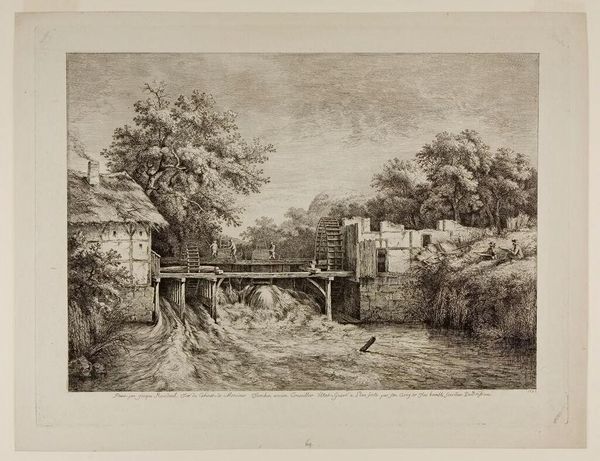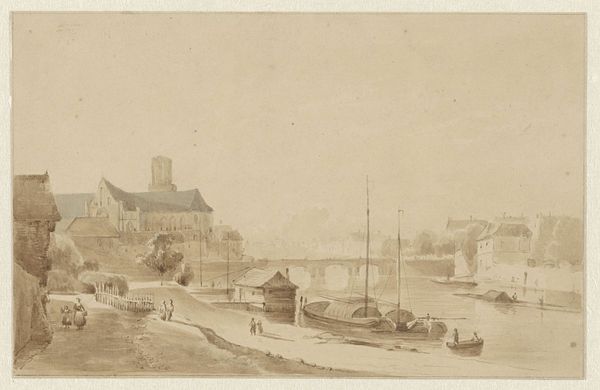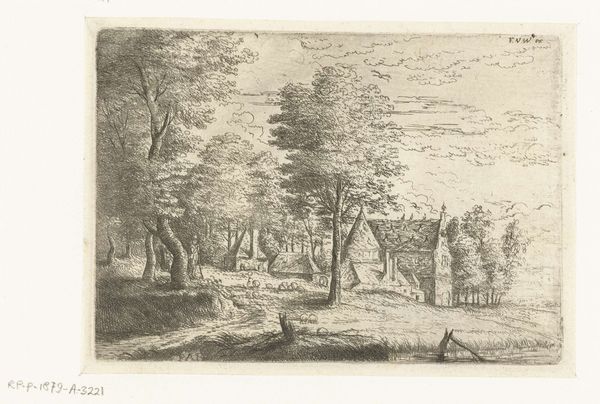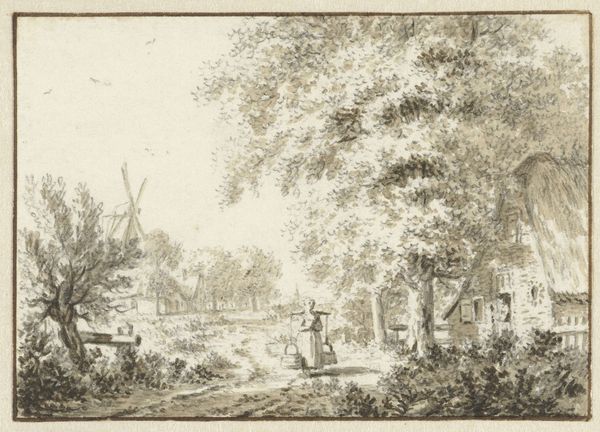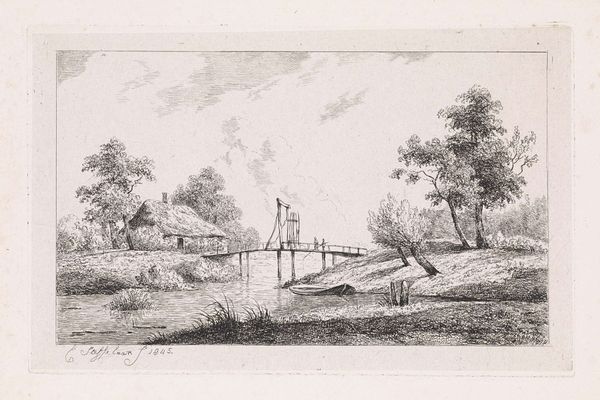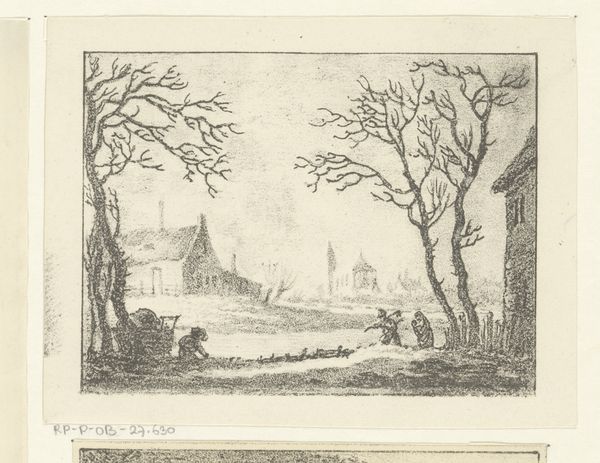
print, etching
#
dutch-golden-age
# print
#
etching
#
landscape
#
realism
Dimensions: height 103 mm, width 202 mm
Copyright: Rijks Museum: Open Domain
Editor: This etching, "Winter Landscape with a Stone Bridge" by Jan van de Cappelle, made sometime between 1640 and 1679, presents a frozen scene. The skaters on the ice and smoking chimneys suggest daily life continuing despite the winter, but there is also a certain isolation to the bare trees and stark landscape. What do you see in this piece? Curator: I see the piece as a study in material existence and the impact of production on daily life. Note the stark contrast between the labor evident in the construction of the stone bridge, the thatched roofs, and the leisure activities of skating. Each requires a different kind of exertion, impacting the very material of their lives, wouldn't you agree? Editor: That's an interesting point, I hadn't thought about leisure as labor’s counterpoint in a way. What about the choice of printmaking as a medium? Curator: The print medium is key. It allowed for the broader distribution of this scene, making images of everyday Dutch life accessible. This accessibility also democratizes art. Consider that etching itself involves a specific labor – the skilled hand of the etcher using acids on a metal plate to create the design and create art available to the people. Editor: So, the act of creating the print itself is relevant to understanding the social and cultural impact of the artwork? Curator: Precisely! We shouldn’t see it just as a quaint landscape. It's an artifact documenting social stratification, the role of labor, and the burgeoning accessibility of images in 17th-century Dutch society. These prints shaped material culture, defining ideas about domesticity, labor, and leisure for an expanding audience. Editor: That adds so many layers to how I initially perceived it. Thinking about the means of production provides a far richer interpretation. Curator: Absolutely, this piece reminds us that art is never created in a vacuum but through the interactions of materials, labor, and a constantly evolving society.
Comments
No comments
Be the first to comment and join the conversation on the ultimate creative platform.
